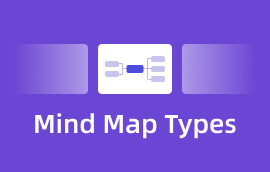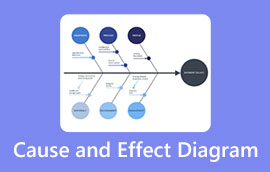Kanban Methodology Review, Principles, Uses, & How to Create It
Many businesses use Kanban to achieve their goals. Some may not be familiar with it, but Kanban has been shaping industries for decades. So, it is a visual presentation of workflow or project management. It became popular because people find it more appealing and intuitive. If you’re new to it, you have come to the right post. Here, get to know the Kanban definition, its principles, uses, pros, and cons. Not only that, we’ll teach you how to make a Kanban board.

- Part 1. What is Kanban
- Part 2. Principles of Kanban
- Part 3. Uses of Kanban
- Part 4. Pros and Cons of Kanban
- Part 5. How to Make Kanban Board
- Part 6. FAQs About What is Kanban
Part 1. What is Kanban
Kaban is an Agile project management framework that is used to visualize workflow. It started in Japan in the late 1940s. Kanban is a Japanese word that means visual board or the card you see. Toyota was the one who developed and applied for just-in-time manufacturing. Thus, it emphasizes continuous improvement and flexibility in task management. Apart from that, it limits work on hold and stuck. By limiting these, it is easy to detect bottlenecks within a team's delivery pipeline. It ensures that they do not slow down the process or disrupt the flow. Kanban is popular with engineering, product, and software development teams. Yet, whatever team you are in, you can use Kanban flow. If you’re interested in establishing a dynamic and flexible workflow, it is a suitable option.
Part 2. Principles of Kanban
A Kanban has its own principles to manage and improve the flow of work. So, there are 4 foundational principles that Kanban uses. The following are:
1. Begin with the existing workflow.
Unlike more structured Agile methods like Scrum, Kanban adapts your team’s existing processes. Kanban is a versatile workflow that you can implement to what you’re already using.
2. Agree to pursue gradual changes.
Big changes can disrupt your team. Now, the new system might not work if you try to change everything all at once. With that, Kanban understands this. As a result, it encourages continuous improvement and making changes step by step. So, begin with small and incremental adjustments to refine the process of your team.
3. Respect the current roles, responsibilities, and methods.
Kanban does not dictate specific team roles, unlike other methods. Hence, it integrates with your current team structure and processes seamlessly. Further, your current methods might have valuable aspects. Thus, it could be a loss if you try to change everything in a single day.
4. Foster leadership from all team members.
Kanban project management acknowledges that a change can originate from a team member, not just those in top positions. With Kanban, team members are encouraged to contribute and brainstorm new ideas. The purpose of it is for process enhancement. At the same time, team members can lead on the new initiatives.
Part 3. Uses of Kanban
Users can utilize Kanban in different ways. Below are some of the popular ways to use this project management.
Inventory Management
Kanban helps in managing how many items you have, like groceries in a store. When items get low, you order more to maintain a balanced stock.
Task Organization
Similar to a to-do list, Kanban helps manage tasks. You can see what needs to be done, what's in progress, and what's completed. That way, you make work more organized.
Project Tracking
For big projects, Kanban keeps you on track. It helps you visualize what's left to do, what's in progress, and what's finished. Thus, you can finish projects more efficiently.
Workflow Optimization
In a factory, Kanban ensures smooth production. When one part is finished, it signals to start the next. So, it assists you in reducing delays and keeping the process flowing.
Customer Support
Kanban helps customer service teams prioritize requests. They can see what needs attention, what's being worked on, and what's resolved. So, it lets you make your customer support more efficient.
Part 4. Pros and Cons of Kanban
Pros of Kanban
◆ Task Clarity
Setting up tasks on a Kanban board makes it easier to see what your team needs to do to move the project forward. With kanban cards, you provide your team with the information they need for their tasks.
◆ Status at a Glance
Checking your team's progress on the Kanban board reduces the need to constantly check on them for updates. You can quickly see which tasks are in progress and which ones are done.
◆ Team Efficiency
Kanban project management helps your team see the workflow, set priorities, and spot problems quickly. This makes your team work better because everyone focuses on the right things at the right time.
◆ Focus and Avoiding Burnout
Kanban helps manage your team's attention, preventing wasted time and energy. Even if you don't work with physical materials like in manufacturing, you need to remember that time and energy are limited resources. Burnout can happen if they're not managed well, leading to lower-quality work.
Cons of Kanban
◆ Project Schedule
Kanban is simple, but it lacks detailed schedules and timeframes. It makes it hard to predict when tasks will be done and when the whole project will finish. Estimating becomes challenging if your kanban board is your only tool.
◆ Complexity Limits
Kanban boards work well as long as they don't get too complicated for the team. When managing big projects, consider using swimlanes to add layers of organization. Without proper upkeep, a complex kanban board can hinder your team's efficiency.
◆ Regular Updates Needed
To make the most of Kanban, you must keep your boards up-to-date. Thus, it requires discipline from you and your team.
Part 5. How to Make Kanban Board
What is a Kanban board? It is actually a tool to visualize workflow. To create a Kanban board, you need a reliable tool that offers everything you need. With that, use the best platform to create one, the MindOnMap. Below is an example of a Kanban board made with this tool.

MindOnMap is a free web-based tool designed to draw your ideas easier and more professional. You can access it on modern browsers, such as Google Chrome, Edge, Safari, and more. Now, you can also download its app version on your Windows or Mac. It also offers various templates, like treemap, flowchart, fishbone diagram, and so on. Aside from that, you can use its provided icons and elements to create your chart. Inserting links and pictures is available to make your work more intuitive.
What’s more, you can use MindOnMap in several scenarios. With it, you can do relationship maps, work or life plan, project management, and more. The notable feature of it is that it offers a collaboration feature. Thus allowing you to collaborate with your teams, colleagues, and organization. Finally, it has an auto-saving function, preventing any data loss with your work. Now, begin creating your Kanban chart with MindOnMap.
First, open your favorite browser and search for MindOnMap. Once you’re on the tool’s website, select from the Free Download or Create Online buttons. Now, create an account to fully access it.
Secure Download
Secure Download
After that, you’ll be directed to the platform’s main interface. Then, choose the layout you need to create your Kanban board. In this tutorial, we’ll use the Flowchart template.
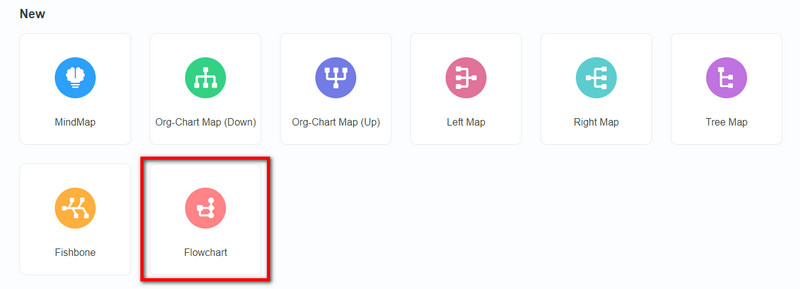
Now, start creating your Kanban board. To do it, you can choose and add shapes, text boxes, lines, and more. There are also themes available that you can use.

To collaborate with your team or organization, click the Share button at the top-right corner. Then, set the Valid Period and Password for security then hit Copy Link.
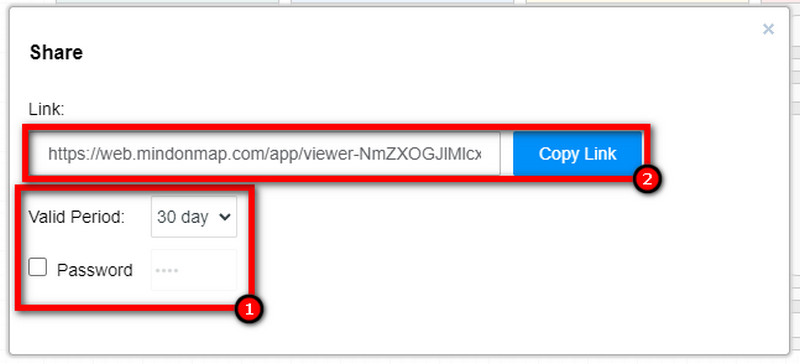
When you’re satisfied with your Kanban chart, save it on your computer’s local storage. Do it by clicking the Export button and choosing your desired output format. And that’s it!
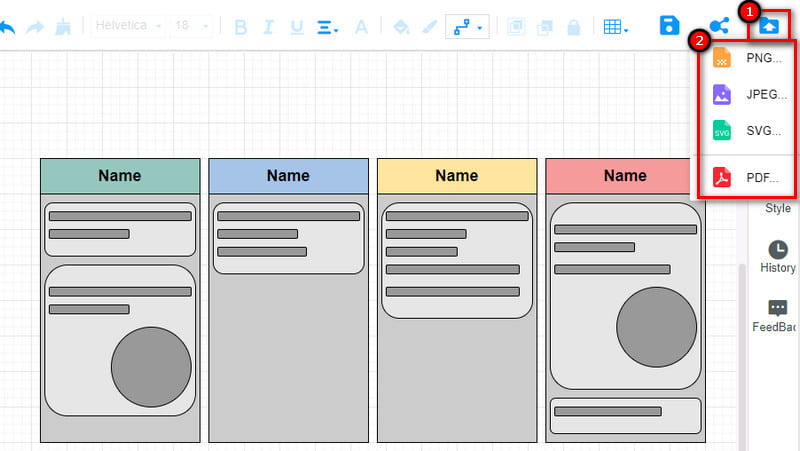
Part 6. FAQs About What is Kanban
What are the 5 elements of Kanban?
There are 5 elements of Kanban. These include visual boards, Kanban cards, work-in-progress (WIP) limits, a commitment point, and a delivery point.
What is Kanban in simple terms?
In simple terms, it is a work management system that uses visual boards. It also helps to monitor work as it goes through the process. At the same time, it optimizes workflow to improve efficiency.
What are the 6 rules of Kanban?
The 6 rules for the effective application of Kanban include:
1. Never pass on defective products
2. Take only what is needed
3. Produce the exact quantity required
4. Level the production
5. Fine-tune production
6. Stabilize and rationalize the process.
Conclusion
All in all, you have learned what does Kanban mean, including essential details about it. Kanban is indeed a dynamic way to empower teams in visualizing work. MindOnMap also helps you in creating a Kanban board more efficiently. If you need a straightforward tool to make more boards or diagrams, you can rely on it. Plus, it is created to suit both beginner and professional tastes.








